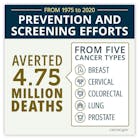Because low-risk prostate cancer is unlikely to spread or impact survival, experts and guidelines recommend active surveillance, which involves regular monitoring and thus avoid or delay treatment like surgery or radiation therapy and their life-changing complications. A new study examined the rates of active surveillance use and evaluated the factors associated with selecting this management strategy over surgery or radiation, with a focus on underserved Black patients who have been underrepresented in prior studies. The findings are published by Wiley online in CANCER, a peer-reviewed journal of the American Cancer Society.
For the study, called the Treatment Options in Prostate Cancer Study, Jinping Xu, MD, MS, of Wayne State University, and her colleagues analyzed data from metro-Detroit, Michigan, and Georgia cancer registries, focusing on patient self-reported information related to Black and white patients who were newly diagnosed with low-risk prostate cancer in 2014–2017.
Among 1,688 patients, 57% chose active surveillance (51% of Black patients and 61% of white patients) over other treatments. After adjusting for other influencing factors, the strongest determinant of active surveillance uptake was a urologist’s recommendation to choose this option. Other factors linked with the decision to undergo active surveillance included a shared patient-physician treatment decision and greater knowledge about prostate cancer. Also, participants living in metro-Detroit were more likely to choose active surveillance than those living in Georgia.
Conversely, men were less likely to try active surveillance if their considerations were strongly influenced by the desire to achieve a “cure” or they expected to “live longer” with treatment, or if they perceived that their low-risk prostate cancer diagnosis was more “serious.”
Education and interventions for patients and especially urologists that address these factors may increase the use of recommended active surveillance among individuals with low-risk prostate cancer.





